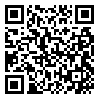Volume 10, Issue 1 (1-2023)
jbrms 2023, 10(1): 38-48 |
Back to browse issues page
Download citation:
BibTeX | RIS | EndNote | Medlars | ProCite | Reference Manager | RefWorks
Send citation to:



BibTeX | RIS | EndNote | Medlars | ProCite | Reference Manager | RefWorks
Send citation to:
Batavani M R, Marandi S M, Ghaedi K, Babaei Khorzoghi M, Boroushak N. Comparison of HIF1 Gene Polymorphism (rs11549465) Among Elite and Amateur Karate-kas versus Non-athletes. jbrms 2023; 10 (1) :38-48
URL: http://jbrms.medilam.ac.ir/article-1-720-en.html
URL: http://jbrms.medilam.ac.ir/article-1-720-en.html
Mohammad Reza Batavani 

 , Sayyed Mohammad Marandi
, Sayyed Mohammad Marandi 

 , Kamran Ghaedi
, Kamran Ghaedi 

 , Mojtaba Babaei Khorzoghi
, Mojtaba Babaei Khorzoghi 

 , Neda Boroushak
, Neda Boroushak 




 , Sayyed Mohammad Marandi
, Sayyed Mohammad Marandi 

 , Kamran Ghaedi
, Kamran Ghaedi 

 , Mojtaba Babaei Khorzoghi
, Mojtaba Babaei Khorzoghi 

 , Neda Boroushak
, Neda Boroushak 


Faculty of Center of Physical Education, Isfahan University of Technology, Isfahan 84156-83111, Iran , batavani@iut.ac.ir
Abstract: (1575 Views)
Introduction: One of the major energy systems for power performance in muscles is glycolysis that is regulated by the levels of Hypoxia-inducible factor-1α (HIF1), which acts as a transcription factor in response to hypoxia. The purpose of this study was to compare the HIF1 gene polymorphism (rs11549465) between elite and amateur power karate-kas versus non-athletes.
Materials and Methods: In this survey, the C/T polymorphism allelic and genotypic distribution of the “HIF1 rs11549465” gene was detected in 550 healthy Iranian persons who were divided into three groups: elite karate-kas (86 males and 86 females) and amateur karate-kas (100 males and 72 females) versus 206 non-athletes (100 males and 106 females). 5 cc blood was taken for DNA extraction and the HIF1 gene T/C polymorphism was determined by PCR from the extracted DNA. Also, RFLP analyses was exerted by electrophoresis separation. Statistical analyses included Chi-Square and multinomial regression tests and data with P < 0.05 were considered to be a significant amount.
Results: The distribution of HIF1 C/T genotype in the groups was significantly different in all of subjects (TC: 25.6%; TT: 11.4% and CC: 63%) (χ2 = 99.889, P = 0.0001), but it was not different between the groups significantly (P > 0.05). Furthermore, multiple regression analysis demonstrated that the genotype of HIF1 was not related to the karate-ka's athletic status.
Conclusion: In Iranian population, the HIF1 gene C/T polymorphism is not related to the karate-ka athletic status.
Materials and Methods: In this survey, the C/T polymorphism allelic and genotypic distribution of the “HIF1 rs11549465” gene was detected in 550 healthy Iranian persons who were divided into three groups: elite karate-kas (86 males and 86 females) and amateur karate-kas (100 males and 72 females) versus 206 non-athletes (100 males and 106 females). 5 cc blood was taken for DNA extraction and the HIF1 gene T/C polymorphism was determined by PCR from the extracted DNA. Also, RFLP analyses was exerted by electrophoresis separation. Statistical analyses included Chi-Square and multinomial regression tests and data with P < 0.05 were considered to be a significant amount.
Results: The distribution of HIF1 C/T genotype in the groups was significantly different in all of subjects (TC: 25.6%; TT: 11.4% and CC: 63%) (χ2 = 99.889, P = 0.0001), but it was not different between the groups significantly (P > 0.05). Furthermore, multiple regression analysis demonstrated that the genotype of HIF1 was not related to the karate-ka's athletic status.
Conclusion: In Iranian population, the HIF1 gene C/T polymorphism is not related to the karate-ka athletic status.
Type of Study: Research |
Subject:
Physiology
Received: 2022/09/30 | Accepted: 2023/02/27 | Published: 2023/01/10
Received: 2022/09/30 | Accepted: 2023/02/27 | Published: 2023/01/10
Send email to the article author
| Rights and permissions | |
 |
This work is licensed under a Creative Commons Attribution-NonCommercial 4.0 International License. |


